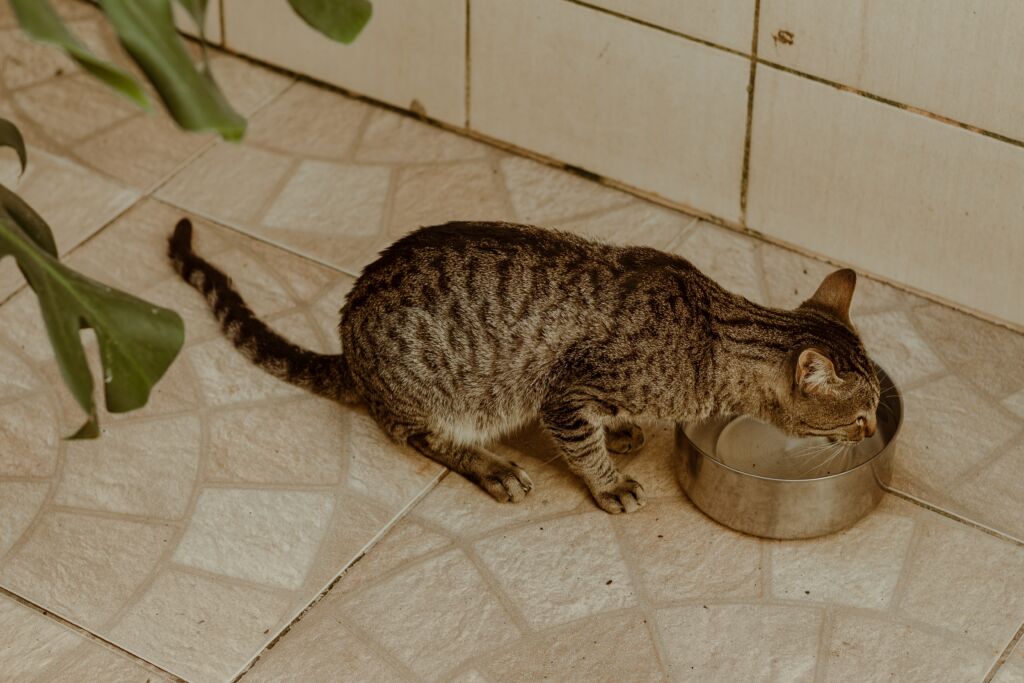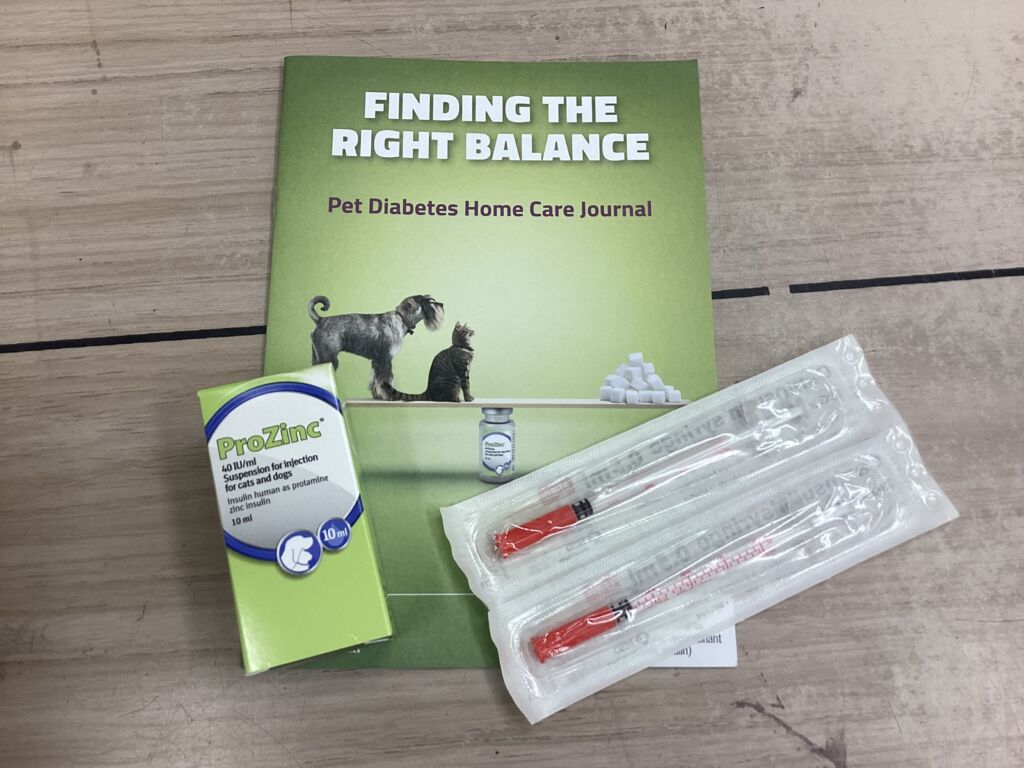Diabetes mellitus is a condition where there is a problem with insulin in the body, either the pancreas is not making enough insulin or the cells are not responding properly to the insulin that is being made (known as insulin resistance). Sometimes it may be a combination of both. Insulin is a vital hormone that helps control glucose (sugar) levels in the blood and allows cells to use the glucose for energy. When insulin is not functioning properly then glucose builds up in the blood, known as hyperglycaemia.
What type of diabetes do cats get?
Cats tend to get insulin resistance diabetes, similar to type two in humans. Although they can also have a problem with the pancreas where the cells stop producing enough insulin in response to the high amount of glucose in the blood.
What are the most common clinical signs?
Due to the high glucose level in the blood the excess glucose is lost in the urine, this causes increased urination and thirst. As the cells are unable to get enough energy there is often an increased appetite and lethargy. Some animals may have weight change as well, this can be an increase or decrease. If the diabetes is severe we can see vomiting, diarrhoea and dehydration associated with ketoacidosis.
How is it diagnosed?
Diabetes mellitus is diagnosed in cats by showing a persistently high blood glucose level, glucose in the urine and compatible clinical signs. Cats can be complicated to diagnose because blood glucose can often be temorarily quite high due to stress. We often run a further test for fructosamine blood levels as this will indicate an average blood sugar level over the previous 2-3 weeks. If this is high then diabetes is highly likely. Alongside diabetes we may also diagnose a urine tract infection, pancreatitis or hyperthyroidism.
What is diabetic remission?
In some cats there is the possibility of diabetic remission, this is where with treatment the body can learn to use insulin properly again and the patient will no longer need medication to help control their diabetes. This can occur up to 60% of case and is more likely in those which have a diet change and twice daily insulin treatment within 6 months of diagnosis.
How is diabetes mellitus treated in cats?
Most cats will be switched to a low carbohydrate diet to try and get them to a good body weight and also encourage remission. Alongside this twice daily insulin injections (every 12 hours) will need to be given under the skin at home, although this is daunting most owners after a few weeks manage really well and cannot believe they were worried about it. The needle size is very small and is often well tolerated by cats. It is also important to maintain a consistent daily routine of feeding times and insulin administration. Although in many cases ad lib feeding in cats on prozinc insulin can be maintained as before.
What is the main aim of treatment?
To maintain a good blood glucose level for most of the day, that is between 4mmol/l to 14mmol/l. Also to give an overall good quality of life with minimal clinical signs and a steady weight.
How does insulin work?
Insulin reduces the glucose levels in the blood by moving it into cells so that it can be used for energy. Glucose comes from carbohydrates in the food. Therefore the dose of insulin will be adjusted on an individual bases and is affected by the type and amount of food that your pet is given.
How can I monitor my pet at home?
There are a few options:
-
Every diabetic animal should have their general water intake monitored, their appetite monitored and their demenour monitored, for instance are they playful and content or lethargic.
-
Some owners may choose to monitor glucose levels at home with a veterinary glucometer.
-
Some owners may choose to have a glucose monitor placed on the cat which can be read by a smart phone and can last up to two weeks. These can be helpful when adjusting insulin doses.
-
Urine samples can be checked regularly to monitor for glucose and ketones in the urine.
Can I adjust the dose of insulin at home?
You should never change the dose of insulin without consulting your vet first. Glucose levels can fluctuate on a daily basis normally and an incorrect insulin dose could lead to the risk of hypoglycaemia.
What is hypoglycaemia and what does it matter?
Hypoglycaemia is low glucose levels in the blood, this can be dangerous and if left untreated can lead to seizures and coma and can even be fatal. The main cause of hypoglycaemia is too much insulin compared to the amount of carbohydrates eaten. Signs of hypoglycaemia include weakness, lethargy, vomiting and incoordination. If any of these signs are seen the cat should be fed immediately, if they do not eat then glucose should be given orally by giving honey or glucose gels (available at most pharmacies) and then your cat should be taken to a vet immediately. DO NOT GIVE MORE INSULIN.
What happens if we miss an injection?
If you are no sure if the injection was correctly administered then do no give another injection, a single missed dose is far less of a problem than a double dose. If a dose has been missed just give the next dose at the time it would normally be due, one skipped dose is unlikely to cause much harm.
What do I do if my cat stops eating?
Stop administering insulin and contact the vets if they have not eaten for more than 12 hours. Monitor closely for signs of hypoglycaemia.
What is the prognosis?
Cats who can be treated effectively can have a relatively normal quality of life and can live for many years after diagnosis, with the average of 3 years. More commonly diabetic pets are euthanised due to treatment failure or the owner being unable to commit to the treatment. In many cases chasing the perfect management of your pets diabetes is futile and you should speak to us if there are any issues as many things can be adapted to make life more manageable.
If you are worried that your cat may have diabetes then please call us on 01702 545558 to book an appointment with one of our veterinarians.



